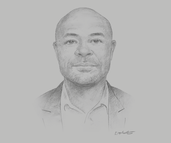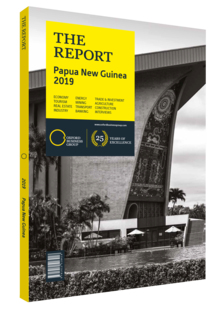Paul Komboi, Managing Director, DataCo: Interview

Interview: Paul Komboi
What steps are being taken to improve both network connectivity and capacity?
PAUL KOMBOI: Two projects are under way to help boost Papua New Guinea’s internet capacity and quality. The first stage of the fibre-optic Kumul Submarine Cable Network was finished at the beginning of 2019, connecting Port Moresby to Madang via Alotau, Popondetta and Lae. The marine portion of the project was completed in 34 days, and the coastal project will eventually be linked to two other fibre-optic networks. The first network is set to connect Arawa to the Indonesian city of Jayapura via seven coastal cities, and the second will link Daru with Kerema. The whole development is expected to be functioning by the end of 2019.
In addition, together with the Australian government, we will also work on the Coral Sea Cable in 2019. This submarine cable will provide a technical maximum capacity of 10 TB per second, which is approximately 1000 times the current capability. There has already been live traffic on the coastal cable, and we have seen improved quality with fewer outages and failings. Upgrading the networks does not only involve updating the links; we must also anticipate potential flaws given our climate. Thus, we need to train our people, and further build the proper operational and management systems to control the entire network.
How has the NTN impacted the cost of services?
KOMBOI: As pricing greatly depends on volume, upgrading the NTN has increased traffic and the number of companies migrating to the new digital infrastructure. From the perspective of a wholesaler, it is important to keep costs down, and globally a lot of processes have been automated and outsourced. Managing costs and driving down prices remains our priority, and we have already seen positive results. Prices have decreased from PGK1250 ($379) per MB in July 2018 to PGK1000 ($303) per MB as of August 2018, and had fallen below PGK1000 ($303) as of March 2019. Therefore, we have to balance costs with volume, because as a wholesaler we can only sell to a few operators licensed by the National ICT Authority, and each operator must calculate costs to utilise our assets and migrate to the cable network before passing the price on to the customer. The profit margin is also small, so operators need to be aggressive as price will play an important role in their strategies. The new infrastructure thus gives operators an opportunity to penetrate more regions and offer higher-quality service. While wholesalers cannot dictate the prices that retail operators set for customers, lower early-stage prices are promising for the future.
To what extent will PNG’s diversification ambitions benefit from the new digital network?
KOMBOI: Investment into the NTN must benefit all sectors, and we want to see a trickle-down effect on the whole economy. This has been proven difficult in the past as our infrastructure was out of date and at odds with modern global market needs for dynamic and fast connectivity, and previous plans to implement new technology were impeded because newer technologies became available. Fibre technology, however, will continue to be used for quite some time, leading to a lower cost of doing business and potentially removing proinent obstacles to investment. The government has already established partnerships to stimulate e-health care and e-education, and these can enable Papua New Guineans to contact overseas hospitals for diagnoses, knowledge exchange, online access to school libraries and interaction with teachers who can educate remotely. PNG, with its strategic location, could also become a digital hub for the Pacific region. A submarine cable will be linked with the Solomon Islands, through a cable between Bougainville and Noro. Countries in this region can also develop satellite connectivity and technology for areas that cannot be reached by fibre cables, making the economic opportunities of the Pacific more attractive from an investment standpoint.
You have reached the limit of premium articles you can view for free.
Choose from the options below to purchase print or digital editions of our Reports. You can also purchase a website subscription giving you unlimited access to all of our Reports online for 12 months.
If you have already purchased this Report or have a website subscription, please login to continue.

